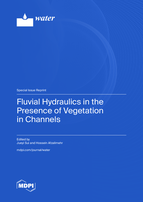Fluvial Hydraulics in the Presence of Vegetation in Channels
A special issue of Water (ISSN 2073-4441). This special issue belongs to the section "Hydraulics and Hydrodynamics".
Deadline for manuscript submissions: closed (1 April 2023) | Viewed by 13762
Special Issue Editors
Interests: local scour; sediment transport; river ice hydraulics; fluvial hydraulics; vegetated channel; snow hydrology
Special Issues, Collections and Topics in MDPI journals
Interests: hydraulic; hydrodynamics; sediment transport
Special Issues, Collections and Topics in MDPI journals
Special Issue Information
Dear Colleagues,
Vegetation patches and strips in riverbeds and riverbanks have a crucial effect in aquatic ecosystems. Vegetation patches and strips play an important role in transporting contaminants through changes in flow hydrodynamics. The interaction between flow and vegetation in a channel should be considered in urban hydrology, stream restoration, and flood management projects. The enrichment and development of vegetation patches have numerous benefits for the environment, indicating that plants have a remarkable role in erosion control in addition to their ecological effects compared to structural methods.
To date, scientists have conducted a large amount of cutting-edge research on all aspects of sediment transport and fluvial hydraulics in the presence of vegetation patches/strips in channels. Many research papers have been published to help researchers continue to explore the subject in the right direction. The aim of this Special Issue is to publish research works that improve knowledge of sediment transport and fluvial process with the presence of vegetation/plants in channels. It will include not only the impacts of vegetation on sediment transport in natural rivers and laboratory flumes, but also topics related to role of vegetation on flow hydrodynamics. We will also include research works regarding sediment retention/deposition occurring in vegetation patches; as well as those on different aspects of vegetation, such as foliage impacts, effects of stem flexibility on turbulence, the mechanical behavior of vegetation, and hydrodynamic models considering the effect of vegetation.
Dr. Jueyi Sui
Dr. Hossein Afzalimehr
Guest Editors
Manuscript Submission Information
Manuscripts should be submitted online at www.mdpi.com by registering and logging in to this website. Once you are registered, click here to go to the submission form. Manuscripts can be submitted until the deadline. All submissions that pass pre-check are peer-reviewed. Accepted papers will be published continuously in the journal (as soon as accepted) and will be listed together on the special issue website. Research articles, review articles as well as short communications are invited. For planned papers, a title and short abstract (about 100 words) can be sent to the Editorial Office for announcement on this website.
Submitted manuscripts should not have been published previously, nor be under consideration for publication elsewhere (except conference proceedings papers). All manuscripts are thoroughly refereed through a single-blind peer-review process. A guide for authors and other relevant information for submission of manuscripts is available on the Instructions for Authors page. Water is an international peer-reviewed open access semimonthly journal published by MDPI.
Please visit the Instructions for Authors page before submitting a manuscript. The Article Processing Charge (APC) for publication in this open access journal is 2600 CHF (Swiss Francs). Submitted papers should be well formatted and use good English. Authors may use MDPI's English editing service prior to publication or during author revisions.
Keywords
- eco-hydrology
- fluvial hydraulics
- local scour
- sediment transport
- turbulence
- vegetated channel







